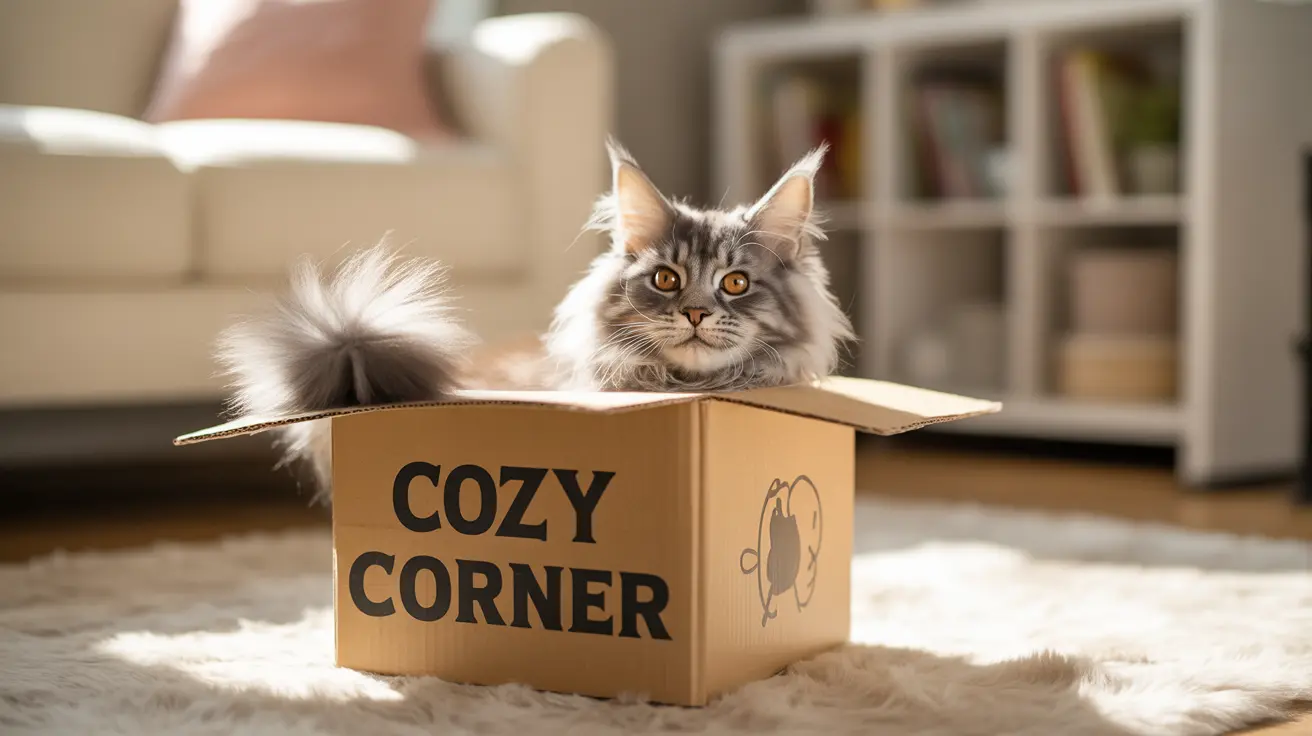Looking for an engaging, cost-effective way to keep your feline friend entertained? DIY cardboard cat toys might be the perfect solution. These simple yet effective playthings tap into your cat's natural instincts while offering environmental and economic benefits that both you and your pet will love.
In this comprehensive guide, we'll explore why cats are naturally drawn to cardboard, how to create safe and engaging toys, and the numerous benefits these simple materials can provide for your furry companion.
Why Cats Are Naturally Drawn to Cardboard
Cats have an innate attraction to cardboard that goes beyond simple curiosity. Scientists have found that cardboard provides cats with essential comfort factors that align with their natural instincts:
- Thermal insulation (86-97°F, their preferred temperature range)
- Safe hiding spots that reduce stress
- Ideal texture for scratching and marking territory
- Satisfying sounds that trigger hunting instincts
Creating Safe DIY Cardboard Cat Toys
Basic Box Transformations
Start with clean, plain cardboard boxes and transform them into engaging play spaces:
- Cut strategic peek holes for hide-and-seek games
- Create multiple entrance/exit points
- Add internal platforms for climbing
- Include dangling elements (secured safely) for batting play
Interactive Puzzle Toys
Transform cardboard tubes and small boxes into engaging puzzle feeders:
- Roll treats in cardboard tubes
- Create treat-dispensing boxes with small holes
- Design multi-level mazes for food discovery
- Build ball-tracking toys with curved pathways
Safety Considerations and Best Practices
While cardboard cat toys are generally safe, certain precautions are essential:
- Remove all staples, tape, and adhesives
- Avoid printed or dyed cardboard
- Ensure all edges are smooth
- Replace toys when they become worn or damaged
- Supervise play with smaller cardboard pieces
Benefits of Cardboard Cat Toys
Physical Benefits
Regular play with cardboard toys provides numerous health advantages:
- Encourages exercise and weight management
- Develops coordination and agility
- Satisfies natural scratching needs
- Promotes active hunting behaviors
Mental Stimulation
Cardboard toys offer significant cognitive benefits:
- Reduces boredom and stress
- Provides problem-solving opportunities
- Satisfies territorial marking instincts
- Creates environmental enrichment
Environmental Impact
Using cardboard for cat toys has notable environmental benefits:
- Reduces household waste
- Provides eco-friendly alternatives to plastic toys
- Creates sustainable play options
- Promotes upcycling habits
Frequently Asked Questions
Why do cats prefer cardboard toys and boxes over other types of toys?
Cats are naturally drawn to cardboard because it provides warmth, security, and satisfying textures for scratching. The enclosed spaces of boxes trigger their instinctual need for safe hiding spots, while the material itself offers perfect surfaces for marking territory and play.
How can I safely make DIY cardboard cat toys at home?
Start with clean, plain cardboard without printing or dyes. Remove any staples or tape, smooth all edges, and ensure any holes or openings are large enough to prevent head/paw entrapment. Avoid using additional materials that could be chewed off or swallowed.
What are the best types of cardboard cat toys for scratching and play?
The most effective cardboard toys include scratch pads made from layered cardboard, boxes with multiple entrance points, tunnel systems created from connected boxes, and puzzle feeders made from tubes or small boxes.
How do cardboard cat toys benefit my cat's mental and physical health?
Cardboard toys provide essential exercise through climbing, pouncing, and scratching while offering mental stimulation through exploration and problem-solving. They also help reduce stress by providing safe spaces and satisfying natural instincts.
What safety precautions should I take when using cardboard toys for my cat?
Regularly inspect toys for wear and tear, replace damaged items promptly, supervise play with smaller pieces, and ensure all materials are non-toxic. Remove any small parts that could be swallowed and avoid using cardboard with harmful inks or adhesives.
Remember, the best cat toys don't need to be expensive or complicated. With some creativity and basic safety awareness, cardboard can provide endless entertainment for your feline friend while being kind to both your wallet and the environment.






